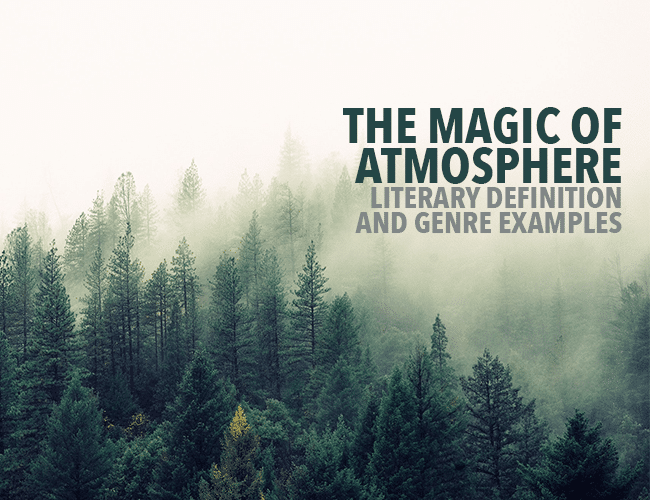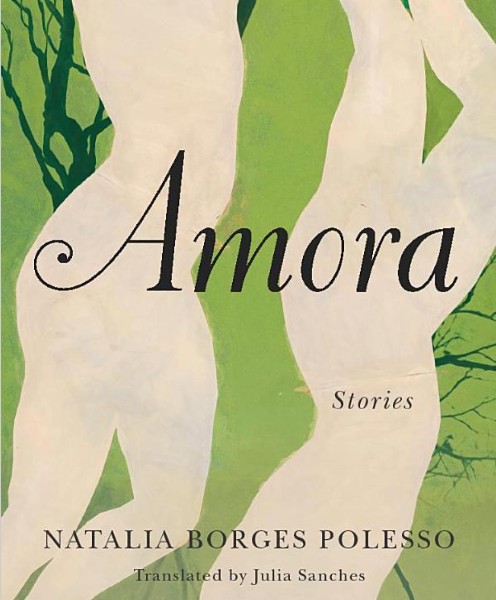http://feedproxy.google.com/~r/TheWritePractice/~3/eGivRq9BEUc/
Atmosphere matters. People will pay a premium to eat at a restaurant with a certain ambience or buy a house in a setting that supports a particular feeling. In like manner, your reader won’t remember every word you wrote, but if you infuse the story with atmosphere, they will remember the way it made them feel.

And readers read in order to feel something.
The Power of Atmosphere
Which version of this scene is more evocative, more engaging, and more enjoyable to read?
Here’s version one:
Amanda walked out of the front door of the hospital and sat on a bench. She was upset because her daughter, Sarah, had been in a car accident and was now brain dead.
And here’s version two:
Amanda moved as if in a trance. Her feet felt detached, numb, as they transported her across the shiny tiles of the hospital floor and spilled her onto a cold, iron bench at the entrance. Nausea rose, clogging her throat with a sour, painful lump, and she bent over, pressing her head down between her knees. She tried to clear her mind, but the image of Sarah, all tubes and bandages, refused to go.
One careless moment behind the wheel, a few seconds of inattention, and her little girl was gone. All that remained was an empty husk, run by machines and monitors.
Each version supplied basically the same information, but the atmosphere between the two could not be more different.
Atmosphere Literary Definition
Atmosphere is all about emotion. It’s the texture of the story, created by the careful selection of details, that provides the sensory palette through which the reader will experience story events.
Atmosphere, mood, and setting are inextricably bound together, making it difficult to parse them out and treat each as a separate entity. Here’s how I think about the difference:
Mood is the target emotion—how you want the reader to feel.
Atmosphere is the environment that evokes and supports that emotion through language, imagery, and specific detail.
Setting encompasses both mood and atmosphere as well as providing the wider framework of geography, time period, historical background, culture, etc.
Point of View Creates Atmosphere
To be effective, a story is not delivered to the reader intravenously or surgically implanted. Every word of a story should come to the reader through the viewpoint character, imparted by that character’s sensory input, opinions, emotions, and thoughts. The way to create atmosphere and pull your reader deep into a story is by grounding them firmly inside the viewpoint character’s head.
Your characters inhabit a world, and they exist there for a reason. Make sure the dialogue and narration reflect their purposes, and make sure those purposes are often in conflict.
When I write a scene, I have the scene goal or purpose in mind. I “get into character,” then I live the scene—I see, hear, feel, smell, taste, think, and opine through what happens, letting it play out in my mind, and write it as authentically as I can.
Genre Shapes Atmosphere
As always, the type of story you’re telling will have a huge impact on the way you tell it, including the sort of atmosphere you want to establish for your readers.
For instance, let’s say you’re writing a scene where a man and woman are setting up camp before dusk falls. The atmosphere you create will differ tremendously depending upon genre. Do you see how the same scenario will have a different feel in romance, suspense, fantasy, science fiction, western, horror?
Atmosphere Examples in 11 Genres
When I worked for our local library system, I learned how crucial tone and atmosphere are to reader satisfaction. Readers crave certain atmospheres by genre, so it’s important to deliver what they’re looking for. Here’s a taste of some of the “flavors” readers crave.
1. Adventure
Readers want to feel heroic, purposeful, and daring. The atmosphere will be one of peril and risk, of being on a quest, and may include a sense of “foreignness” which highlights the danger as these stories tend to take place outside the character’s ordinary world.
Here’s a slice of atmosphere from Jon Cleary’s novel High Road to China.
At 12,000 feet they leveled off, sat like eagles in the shining galleries of sky. The air was much cooler up here and Kern was glad of his flying suit. He felt the weariness slide off him with the sweat that had swamped him on the ground. But it was more than just the air that was invigorating him. He had felt like this on other mornings, but now the feeling was heightened, there was almost a sexual edge to it.
Cleary used details like the shining galleries of the sky, the weariness sliding off with the sweat, and an almost sexual tension to convey an atmosphere of conquest and adventure.
2. Fantasy
Readers want to feel enchanted, inspired, and valiant. The atmosphere is mythic, magical, and life-affirming and these stories often have an epic, good against evil feel and take place in another world or an earth unlike the one we ordinary creatures inhabit.
I pulled a small example from Harry Potter and The Half-Blood Prince, by J.K. Rowling.
Harry was sure that Dumbledore was going to refuse, that he would tell Riddle there would be plenty of time for practical demonstrations at Hogwarts, that they were currently in a building full of Muggles and must therefore be cautious. To his great surprise, however, Dumbledore drew his wand from an inside pocket of his suit jacket, pointed it at the shabby wardrobe in the corner, and gave the wand a casual flick. The wardrobe burst into flames.
The very name of Dumbledore evokes a fantastical feeling, along with the references to Hogwarts and Muggles. Even if you’ve never heard of Harry Potter, these terms conjure up visions of something mystical. The wand, the casual flick, and the burst of flames confirm and enhance that feeling.
3. Historical Fiction
Readers want to feel like they’re painlessly learning something about history, experiencing a moment from the past. These stories take the reader back in time and must do so convincingly, with accurate detail and reconstruction of events. The atmosphere varies widely, depending on the subject, and can range from a romantic view of the period to a brutally stoic one.
Here’s an example from Jeffery Deaver’s novel of Berlin in 1936, Garden of Beasts.
Another man sat in an ornate chair, sipping coffee, his legs crossed like a woman’s: the clubfooted scarecrow Paul Joseph Goebbels, the state propaganda minister. Ernst didn’t doubt his skill; he was largely responsible for the Party’s early, vital foothold in Berlin and Prussia. Still, Ernst despised the man, who couldn’t stop gazing at the Leader with adoring eyes and smugly dishing up damning gossip about prominent Jews and Socis one moment then dropping the names of famous German actors and actresses from UFA Studios the next.
The reader is pulled into the historical scene, learning factual details while absorbing the flavor of the moment through the details Deaver chose to include: clubfooted scarecrow, adoring eyes, name-dropping, and damning gossip.
4. Horror
Readers want to feel a chill, a sense of menace and supernatural terror. Atmosphere is key, and must permeate the story with a sense of foreboding and unease as readers await the unexpected. Create the ominous and macabre for the reader, with a crucial element of surprise and sometimes an unresolved ending as the horror lives on.
I’m using a short example from Edward D. Hoch’s story ”The Faceless Thing.”
It was steamy here, steamy and hot with the sweat of the earth. He flipped on the flashlight with trembling hands and followed its narrow beam with his eyes. The place was almost like a room in the side of the hill, a room perhaps seven feet high, with a floor of mud and ooze that seemed almost to bubble as he watched.
Reading this description, hot and steamy with the sweat of the earth, a little room buried in the hillside, makes it feel as if we are being swallowed by a malevolent earth monster, and the floor of mud and ooze bubbles in our minds as we wait for something horrific to emerge from it.
5. Literary Fiction
Readers want to feel the joy of language, that they are challenging themselves to think and absorb profound concepts through symbolism and beautiful imagery. The tone is usually provocative and the issues more serious, often with gritty and hard-hitting backgrounds that can make for a dark atmosphere though various types of humor can also come into play.
I pulled a paragraph from Harlan Ellison’s story “The Whimper of Whipped Dogs” for an example.
She was drawn again and again to the window, to stare down into the courtyard and the street. She tried to superimpose over the bleak Manhattan concrete the view from her window in Swann House at Bennington: the little yard and another white, frame dormitory; the fantastic apple trees; and from the other window the rolling hills and gorgeous Vermont countryside; her memory skittered through the change of seasons. But there was always concrete and the rain-slick streets; the rain on the pavement was black and shiny as blood.
The bleakness comes through, giving a hopeless feeling, the imagery vivid. There is depth and significance in the atmosphere.
6. Mystery
Readers want to feel intellectually challenged and the satisfaction of seeing justice served. Though the mystery genre is evolving and becoming increasingly difficult to define, there is always a puzzle of some sort to be explored. So, the atmosphere is one of expectation, secrecy, and curiosity, sometimes fraught with danger.
Here’s an example from Straight by one of my all-time favorite mystery writers, Dick Francis.
During the evening I failed to both open the green stone box and to understand the gadgets. Shaking the box gave me no impression of contents and I supposed it could well be empty. A cigarette box, I thought, though I couldn’t remember ever seeing Greville smoking. Perhaps a box to hold twin packs of cards. Perhaps a box for jewelry. Its tiny keyhole remained impervious to probes from nail scissors, suitcase keys and a piece of wire, and in the end I surrendered and laid it aside.
Francis creates rampant curiosity here as reader and character together attempt to open the mystery box and to guess its significance.
7. Suspense
Readers want to feel that delicious thrill of uncertainty and tension, not knowing who to trust or where to turn. All is not as it seems, something sinister stirs beneath the surface, and the atmosphere has a nightmarish quality. Peril threatens, madness lurks, and there is often a slow burn of anxiety which builds to a wrenching climax.
Getting the atmosphere right is critical, so I turned to one of the masters, Mary Stewart, for an example from her novel This Rough Magic.
A ripple rocked me, nearly turning me over. As I floundered, trying to right myself, another came, a wash like that of a small boat passing, rolling me in its wake. But I had heard neither oars nor engine; could hear nothing now except the slap of the exhausted ripples against the rock. Treading water, I looked around me, puzzled and a little alarmed. Nothing. The sea shimmered, empty and calm, to the turquoise and blue of its horizon. I felt downwards with my feet, to find that I had drifted a little farther out from shore, and could barely touch bottom with the tips of my toes. I turned back toward the shallows.
The atmosphere fairly screams with menace. Something is happening, something disturbing and unseen, and we are out of our depth, at the mercy of the waves. Stewart uses words—ripple, rocked, floundered, exhausted, drifted—to create a feeling of uncertainty and vulnerability.
8. Romance
Readers want to feel a spark, the thrills and disappointments of a romantic pursuit and the ultimate satisfaction of a happy ending. It’s hard to pinpoint a general atmosphere for such a large and diverse genre, but anticipation is a necessary ingredient for the proper atmosphere—a longing hunger and burning desire for completion.
Here’s an example from the Nicholas Sparks novel The Notebook.
The words were spoken with such sincerity that she knew he wasn’t saying it just to be nice. He truly believed in her ability, and for some reason that meant more to her than she expected. But something else happened then, something even more powerful. Why it happened, she never knew, but this was when the chasm began to close for Allie, the chasm she had erected in her life to separate the pain from the pleasure. And she suspected then, maybe not consciously, that there was more to this than even she cared to admit.
The emotional longing to connect with another person is here, the desire to take down the wall and trust someone with the innermost parts of your soul. That’s the atmosphere of true romance.
9. Science Fiction
Readers want to feel intrepid, pioneering, like they are pushing the boundary of familiar territory and forging into strange, new worlds. Specifics are all over the map with this one, but the atmosphere is usually exploratory, questioning and probing, a voyage of discovery in some sense, filled with the enigmatic and alien.
I pulled an example from one of my favorite Ray Bradbury short stories, “The Veldt.”
They stood on the thatched floor of the nursery. It was forty feet across by forty feet long and thirty feet high; it had cost half again as much as the rest of the house. “But nothing’s too good for our children,” George had said. The nursery was silent. It was empty as a jungle glade at hot high noon. The walls were blank and two dimensional. Now, as George and Lydia Hadley stood in the center of the room, the walls began to purr and recede into crystalline distance, it seemed, and presently an African veldt appeared, in three dimensions, on all sides, in color reproduced to the final pebble and bit of straw. The ceiling above them became a deep sky with a hot yellow sun. George Hadley felt the perspiration start on his brow.
The familiar, a nursery, becomes something new to be explored—an African veldt. The atmosphere created is both intriguing and subtly threatening, drawing the reader into an alien space and giving rein to curiosity.
10. Thrillers
Readers want to feel—obviously—thrilled. They want an adrenaline rush, to experience intrigue, danger, and trepidation. Frenetic and larger-than-life, thrillers encompass an atmosphere of large-scale peril. Comprising elements of the Adventure, Suspense, and Horror genres, the tone of a thriller is one of desperation and constant movement.
I’m using an excerpt from J.M. Dillard’s adaptation of The Fugitive as an example.
Amazingly, the train’s forward momentum slowed but did not stop. Kimble heard rather than saw it, just as he heard the shuddering explosion that vibrated in the ground under his shackled feet. At the soft, breathy, ominous whoosh, he glanced over his shoulder and saw flames streaming down the sides of the train. Incandescent red-orange against the backdrop of night, the fire illuminated the railroad crossing like daylight, revealing the injured guard lying safely on the opposite bank. All this Kimble saw in a millisecond, and as he continued to look, never slowing, there was another eardrum-shattering squeal of metal on metal as the flaming locomotive veered off the tracks—away from the guard, directly toward Kimble.
The atmosphere is one of constant peril and multi-directional attacks so that reader and characters are barely able to keep ahead of certain, ultimate disaster. Fast-paced and thrilling.
11. Westerns
Readers want to feel moral, like they are championing justice and standing up for decency. The atmosphere of a western engenders a type of rugged chivalry and honor against a harsh backdrop. Action, adventure, and crafty strategy loom large, but justice is paramount, and suffering and sacrifice are an integral part of the scenery.
Here’s an example from Larry McMurtry’s Dead Man’s Walk.
Bigfoot Wallace squatted by the fire—he had just finished pouring himself a cup of coffee. It was chickory coffee, but at least it was black. Bigfoot paid the turtle no attention at all—Matty Roberts had always been somewhat eccentric, in his view. If she wanted to throw snapping turtles around, that was her business. He himself was occupied with more urgent concerns, one of them being the identity of the three warriors who had tortured the Mexican to death.
Rugged conditions and justice—these come across in the atmosphere even in this short snippet.
Satisfied taste buds equals happy reader
What I gave you above is just a tiny sampling of the atmospheric possibilities, but let me emphasize how important the right flavor is to readers. Determine the atmosphere you want to create—the type of emotional experience your reader desires—and deliver it through the senses, emotion, and opinions of your POV character.
By doing this, you’ll help your reader enjoy the kind of reading experience they yearned for when they picked up your book, and that’s a deal you can both be happy with.
Do you crave a certain atmospheric flavor in the books you read? Tell us about it in the comments.
PRACTICE
Let’s infuse a scene with atmosphere! Choose one of the scenarios below and let the atmosphere come alive as I did in the hospital example above. Use plenty of sensory detail, and don’t forget to express character opinion and emotion.
- Jim ran the 10K race. It was his first race since his open-heart surgery and he was glad he was able to run again.
- Mary Beth drove down the highway. She was too restless and upset to stop since her husband of twenty-eight years told her he wanted a divorce.
- The storm blew torrents of water into Brandon’s boat, swamping it. Brandon was horrified to realize the boat was sinking, six miles off shore.
Let the atmosphere shine through! Write for fifteen minutes. When you are finished, post your work in the comments, and be sure to give feedback for your fellow writers, too.
The post The Magic of Atmosphere: Literary Definition and Genre Examples appeared first on The Write Practice.








